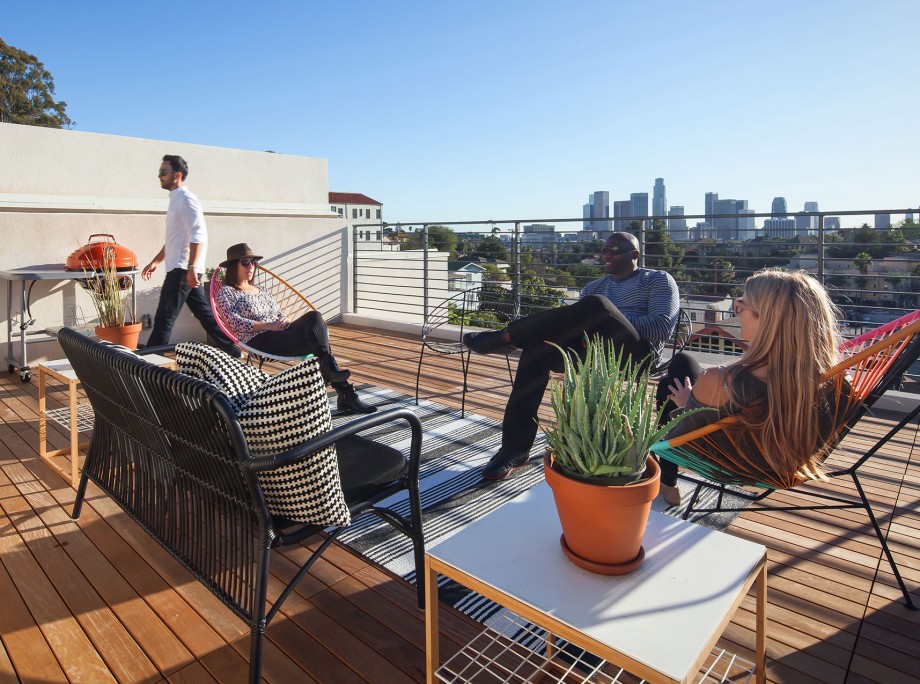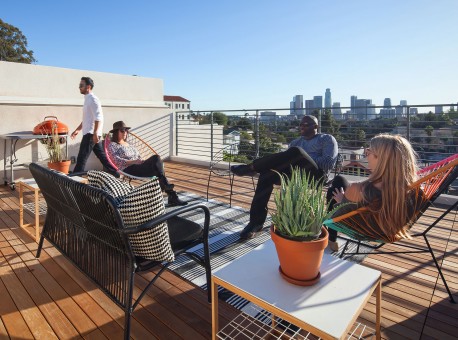Manny Gonzalez – Looking Back 25 Years to Design the Future
Builder & Developer
October 20, 2015
In 1990, American families welcomed Homer, Marge, Bart and Lisa into their homes for the first season, and newspaper headlines told of Nelson Mandela’s release from prison and Margaret Thatcher resigning as British Prime Minister. Pioneer sold the very first in-car satellite navigation system that year and the Hubble Telescope was placed in service by the Space Shuttle. It was also the year the US headed into a major recession fueled by a real estate crisis, stock market collapse, financial engineering of junk bonds coming to rest, loan failures, rising taxes, a war in the Middle East, and a spike in oil prices. Sound familiar?
1990 also saw the design of master plans like The Villas of Renaissance in San Diego, which introduced Italianate architecture to production housing, and won Gold Nugget Grand Awards in doing so. In the early 2000s, when the first 780 units of Communications Hill in San Jose, Calif. were built, the Mediterranean theming continued, even down to the marketing name Tuscany Hills. While some master-planned communities still recreate Italian hill towns, many of today’s designs don’t look back on historic styles, they look forward to a fresh, modern architectural expression. The 2,200-unit build out of the rest of Communications Hill transitions from the Italian style into the simple sophistication of today’s contemporary design.
It’s not only the look of new master plans that has changed over the last 25 years, it’s the feel as well. Blended communities, where active adult, age-qualified neighborhoods are mixed in with traditional family homes, add to the fabric that makes up master plans like Gavilan in Rancho Mission Viejo, Calif. and The Victory District at Verrado in Buckeye, Ariz. Those communities are all about lifestyle, total wellness and having fun, and at the same time, the seamless incorporation of Universal Design into the homes that will meet the changing needs of the residents.
The companies that manufacture building products are embracing Universal Design as well with touchless faucets, trench drains for showers to allow zero threshold entries and grab bars. Today’s grab bars look more like a bath accessory than the institutional ones that were used in the past to meet handicap code requirements. Even in cabinetry we are seeing more drawers and pull-out pantry storage relieving us of the need to get down on our knees and search for that elusive pan at the back of the shelf.
Multi-generational housing and Universal Design doesn’t have to be limited to age-qualified communities. Skylar at Playa Vista in Los Angeles turned the three-story townhome on its side to deliver single-level living and multigenerational suites that appealed to everyone— from first-time home buyers to empty nesters. The appeal of the indoor/outdoor living with a contemporary feel has caught the attention of developers from coast to coast who have other versions of this design on their boards.
Contemporary design has found its way into single-family designs as well. The unique architecture of The Solaris Collection in South Jordan, Utah helped make it the bestselling community in the Daybreak master plan. Whether the design is traditional or contemporary, the appeal of living in a cool infill area has made small lot, single-family ordinance in the City of Los Angeles popular with small builders and publicly-traded homebuilding companies alike. Twenty-five years ago, it would have been unheard of to deliver fee-simple homes at nearly 30 dwelling units per acre, but that’s what communities like Gaspar in Los Angeles’ Echo Park neighborhood are doing today. And, having your open space on the roof instead of on the ground has proven to be a desired feature with the residents who love their skyline views.
In 25 years, we have gone from the hills of Tuscany to urban infill, small lot homes. We’ve seen garden apartments achieve densities of over 40 to the acre when we used to plot them at about half that density in 1990. We went through a period of “salad dressing design,” homes that featured French, Italian and Ranch architecture, but now the generation that grew up hanging out at the local Apple Store is now looking for something fresh and new. Technology has come a long way since the first Mac computer debuted more than 25 years ago, and technology will continue to play an increasingly larger role in our homes and how we live over the next 25 years. The ABC Green Home demonstrated how technology can help make a net-zero energy home even more sustainable by monitoring and controlling comfort and utility settings.
But, there is a different kind of technology that will have the biggest impact on the homebuilding industry over the next 25 years, the driverless car. The technology is already here and, with people using Uber and Lyft to get around these days, homes a quarter of a century from now won’t need a driveway or garage because there won’t be a car to put in the garage. And, it may not even take 25 years to get there. While it may seem like cars have been around forever, we have only had our iPhones for eight years. Get ready for your driverless car and your garage-less home in 2040, if not sooner!
Manny Gonzalez AIA, LEED AP and principal is the senior partner with national awardwinning KTGY Architecture + Planning. He is based in Los Angeles and can be reached at (310) 394-2623 or mgonzalez@ktgy.com.

